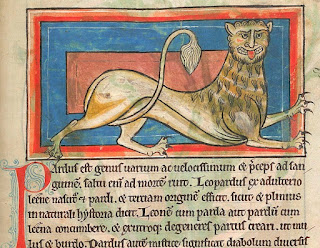She was raised in Paris, learning to read and developing a love of books (she may have been more literate than her husband). The records of her wardrobe indicate the wealth from which she came: dresses of velvet and taffeta, furs, 72 headdresses, over 400 yards of linen, and two gold crowns. She also brought to the marriage gold and silver dinnerware.
A contemporary chronicler called her "the beauty of beauties... in the kingdom if not in all Europe." Since her father was called le Bel ("the Fair") because of his looks, and her brothers were all described as handsome men, it is likely that her description was not just courtly flattery. Contemporaries also commented on her charm, her skill at persuasion, and her intelligence. It was specifically said that she took after her father, not her mother, who was said to be short and heavy.
Although she well understood the duties of a woman married for political expedience, she was likely annoyed at her new husband's preference for the company of certain others, such as Piers Gaveston and Hugh le Despenser the Younger. Although she and Piers are said to have made peace with each other, Hugh was less gracious, and her husband's increasing closeness to Hugh (after Gaveston's death) ultimately motivated her to return to France and raise an army to invade England and deal with her increasingly wayward husband.
Still, between 1312 and 1321, she bore him four children, one of whom succeeded Edward as king, one of whom became queen of Scotland. She also stood by his side through some difficult times with his barons, until Hugh le Despenser started deliberately giving her cause for anger and desire for revenge. Ultimately, she felt she had no choice to ally herself with others and invade England, deposing her husband and eliminating Despenser.
How she managed the invasion and earned the epithet "She Wolf of France" will be offered in more detail in the next post.

























